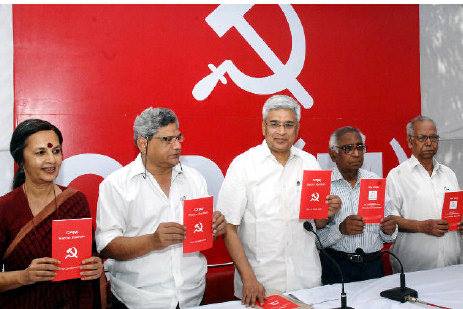
Understanding Indian Communist Leadership – From ‘Why I am not a Hindu’ by Prof Kancha Ilaiah
Notionally the Communist leadership was trying to portray itself as an integral part of the masses and to stress that it was no different from the people. But in reality the Dalitbahujan masses and the Communist leadership remained distinctly different in three ways:
(1) the Communist leadership came from the ‘upper’ caste—mainly from Brahmins; (2) they remained Hindu in day-to-day lifestyles, and (3) by and large the masses were economically poor but the leaders came from relatively wealthy backgrounds.
The masses came from Dalitbahujan castes, and these castes never found an equal place in the leadership structures. Even in states like Andhra Pradesh and Kerala, where non-Brahmin movements were strong enough to influence the society, the pattern held good. In Andhra Pradesh the neo-Kshatriyas and some Brahmins like – Devulapally Venkateswar Rao and Giri Prasad Rao became leaders, while the mass base (the sea) was from the Dalitbahujan castes.
In Kerala, the Brahmins, who always remained brutal towards the masses, became the leaders, while the cadre base of the party was from the Dalitbahujan castes. Of course, Bengal is a classic example of rich Bengali bhadralok babus becoming leaders without even mobilizing their own caste people into becoming part of the mass base of the party.
All over the country, the Brahmin population has become leaders in all spheres of socio-political life. They never remained part of the masses. Thus even the Communist movement started functioning in two separate camps—the ‘upper’ caste leader camp and the Dalitbahujan cadre camp. Ambedkar was the first one to understand this fact.
Did the Communist upper’ castes give up the Hindu way of life? Certainly not. Their social relations continued to be within their caste circles. Marriages took place within the caste structure; their ‘personal friends’ remained within their own caste circles.
They never declared themselves to be against Hinduism. They have not built a critique of the Hindu Gods. For example, all the Hindu Gods, beginning with Brahma, Vishnu, Maheswara to the last of the Dashavatara (ten incarnations) were anti-Dalitbahujan weapon-wielding heroes who built a system against Dalitbahujans.
In all of Indian Communist literature, there is no text which has critiqued these Gods.
As most of the Communist intellectuals happened to be Brahmins they never really distanced themselves from such Hindu Gods and their culture. Even as the Communists talked about the counter-culture, their counter-culture never distanced itself from Hindu notions of life. This is a unique characteristic of Indian Communists, and it is a result of the caste that the leaders belong to and the Hinduism of which they are a part. They may say that they do not go to temples as ordinary Brahmins or Baniyas do, but they simply forget the fact that they have converted their central committees into Hindu-power management centres. They converted Marx, Engels and Lenin into ‘Communist Gods’ where people were supposed to find solutions in their theories for every social, economic or political problem that Indian casteist society was suffering from. Persons coming from Dalitbahujan castes were not allowed to become self-confident leaders. It is a brahminical Hindu strategy to destroy the basis of that self-confidence in Dalitbahujan masses.
The philosophical perception of a liberal Hindu leader and a Communist Hindu leader about the Dalitbahujans is similar to that of the classical Hindu forces. They believe that the Dalitbahujans are unworthy of handling power or operating power structures; they believe that the ‘upper’ castes cannot be led by the Dalitbahujan castes. It never struck a Hindu Communist that the so-called Sudra Gods and Goddesses are quite contrary to the Gods and Goddesses of Hindus. It never struck them that the Dalitbahujan Gods and Goddesses are expressions of the productive cultures of the vast masses. For example, a Kattamaisamma is a discoverer of a tank system, a Pochamma is the discoverer of herbal medicine for all diseases, a Beerappa is the earliest sheep breeder, a Potaraju the protector of the fields, a Yanadi a steel technologist. A Communist leader should have had a clear perception of cultural differences between the exploiters and the exploited, but these leaders never did care to study these cultures. They felt threatened to discover the production-based culture of the Dalitbahujan castes.
[Excerpts from ‘Why I am not a Hindu’ by Prof Kancha Ilaiah]
Thanks, Jayant Pathri for pointing it out.



+ There are no comments
Add yours